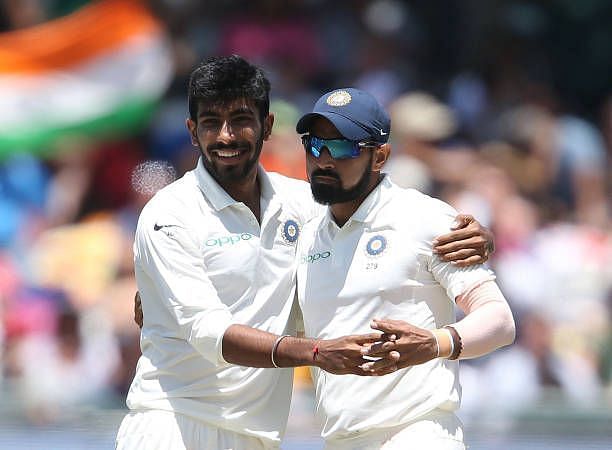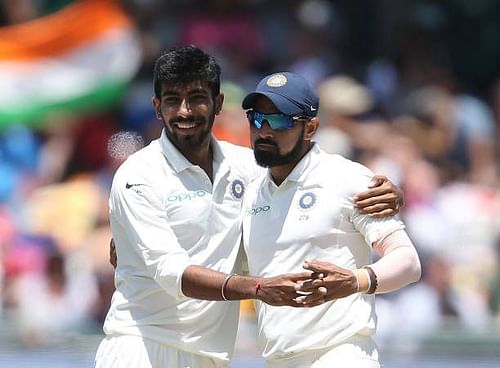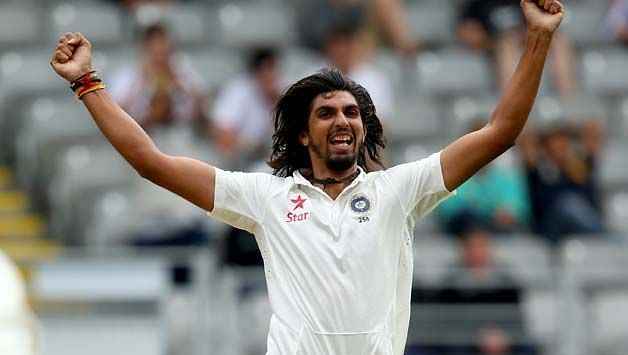
South Africa vs India 2018: Should Ishant Sharma have played in place of Jasprit Bumrah?

Some decisions befuddle and some amaze. When faced with a problem of plenty, it is but natural that waves of dilemmas and confusion creep in; forcing a leader to emerge with a judgement that is the topic of much debate and discussion. As the much-anticipated Test series between India and South Africa got underway at Newlands with youngster Jasprit Bumrah making his debut, replacing Ishant Sharma, arguments broke forth in the cricket-crazy nation.
How could a player that has made his mark in the shortest format of the game replace a senior veteran of the squad? How could mighty performances in the LOIs guarantee a fast-track in the Test squad, that too in the very first match of a crucial innings? With Ajinkya Rahane already being dropped for the in-form Rohit Sharma, Kohli’s move to bank on current form over reputation was dissected all over. Yes, Ishant has been the butt of most jokes ever since he made his debut, but that was all in good humour. Through consistent performances and a truckload of experience in overseas conditions, the lanky fast bowler was termed an unfortunate miss from the final eleven and after the first innings had wrapped up, the belief had rarely been altered.
Ishant’s form and Bumrah’s inexperience

Yes, Bumrah is a phenomenon to watch. His slower deliveries and toe-crushing Yorkers ensured that he emerged a match-winner for India in the death overs, having already picked up 56 wickets at an average of 22.73 in ODIs. In 2017, he played 23 matches at an average of 26.25 and it is no secret that with since emergence, the Indian pace-bowling unit has started to bear a more formidable and menacing look.
But to pick him over Ishant in the first Test match hardly made any sense. Firstly, if Kohli was banking on form, he need not have looked beyond the second Test match against Sri Lanka in Nagpur, where the Delhi bowler returned with match figures of 5/80. Amidst spells of inconsistency, he delivered one that reminded one of the fiery youngsters that had emerged as Ricky Ponting’s nemesis way back in 2007. Equipped with a shorter run-up and more pace than what was on display Down Under, Ishant produced a brilliant period of fast bowling at the Lankans; one that visibly perturbed the likes of Sadeera Samarawickrama and Dimuth Karunaratne.
The deliveries landed beautifully in-line with the off-stump and on the seam. It moved away just slightly away from the batsman and the movement seemed a little too difficult to handle. His stock delivery, one that comes into the batsmen and across to the left-hander is enough to create doubts in the minds and in that one spell, Ishant always emerges a new star.
A star that is defined by a bowling rhythm which is a deep delight to witness. A star that relies on his barrage of bouncers and control, holding up the line from one end, even if the wickets do not come his way. A star that is aggressive and will not shy away from showering the rivals with angry glares and ugly send-offs if the situation demands it that way.
If the form was the sole criteria in garnering a selection in the eleven, Ishant’s absence is but a matter of bewilderment. With 80 wickets in matches across South Africa, Australia, England and New Zealand, including one of the most spectacular spells by an Indian fast bowler in Lord’s in 2014, the 29-year-old would have been an asset on a pitch that offered adequate assistance to the seam bowlers.
Selecting a player in the Test squad over his ODI performances is not new to Indian cricket. Way back in 2014, Stuart Binny too had found a seat in the flight to the Test tour in England after picking up 6 wickets against Bangladesh. Needless to say, he hardly was able to create an impact in the whites and his career only dwindled since then.
With Bumrah’s strength being his slower yorkers with the white ball that swings easier than the red kookaburra, throwing him straight up to tackle the likes of AB de Villiers and Faf du Plessis was always going to be a tough challenge. Not only was he erratic in his line and length, he often strayed down the leg side. By releasing the balls from wide of the crease, Bumrah managed to create an angle that accentuated the drives and the boundaries by the batsman. After the magical spell by Bhuvneshwar Kumar, in which he picked up three wickets in as many overs, the onus fell on Mohammad Shami and Bumrah to continue with the controlled bowling, but it ended without success.
If in case he does falter in the first match, it will inevitably dent his morale and confidence going ahead in the series. With a large majority even questioning his role as a five-day bowler by fearing his slackened effectiveness in bowling the Yorkers in LOIs once comes up with more variations in Tests, it would have done no harm to seat the Gujarat bowler on the sidelines, from where he could have learnt the nuances before being thrown into deeper waters. If the management really wanted to give him a go in Tests, why was he not picked to play against the Lankans in which Ishant played well only to find an exit once the crucial tour began?
Not only was Ishant’s control and experience amiss on the first day, his height too could have caused trouble, just like Morne Morkel was able to cause amongst the Indian top-order. However, more than that, it was the strange selection of experience and youth that remained the tale on Day 1 of the enthralling Test match in South Africa.